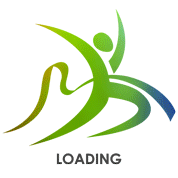
Copyright © 2021 - 2025
Sportsmatik.com. All Rights Reserved

Para cross-country skiing is a Paralympic sport which is an adaptation of cross-country skiing for athletes with a range of disabilities. Athletes with physical impairments or visual impairments/blindness are eligible to compete in the competitions and are categorized into various sport classes.
Based on the disability, an athlete may use a sit-ski which is a chair equipped with a pair of skis. Athletes with visual impairments/blindness compete with a sighted guide. The sport was included at the Winter Paralympics since its first edition in 1976 in Sweden. It is one of the two disciplines of Nordic skiing at the Winter Paralympics; the other one is Biathlon.
Para cross-country skiing was introduced at the first edition of Winter Paralympics, held in the year 1976, in Örnsköldsvik, Sweden, initially using the classic technique. Skate-skiing was first approved at the Innsbruck 1984 Winter Paralympics and became a medal sport in 1992 in Albertville, France. It was for the first time in Lillehammer 1994 Winter Paralympics when Nordic skiers competed in the same venue used for the Olympic Winter Games.
| Men’s Events | Women’s Events | Relay Events |
| 1 km sprint (all classes) | 1 km sprint (all classes) | 4 x 2.5 km mixed relay (combined classes) |
| 10 km (all classes) | 5 km (all classes) | 4 x 2.5 km open relay (combined classes) |
| 15 km (for sitting classes) | 12 km (sitting classes) | |
| 20 km (for standing and visually impaired classes) | 15 km (standing and visually impaired classes) |
Men and women compete as individuals or as teams in various events of cross-country skiing.
Para Cross-country Skiing - Clothing
Uniform, other equipment and protective gears used in para-cross country skiing are same as those used in Cross-country skiing.
Para Cross-country Skiing - Sit-ski Poles
Poles used with sit-skis are short to accommodate skiing from a sitting position and vary based on the height of the sit-skier and the sit-ski. Correct height of the poles is generally determined by measuring its length from the ground to the skiers' mouth.
Para Cross-country - Headsets
Blind skiers use sound location boxes and headsets to communicate with their guides.
Para Cross- country - Sit-skis/Mono-skis
Sit-skis consists of a seat on a frame mounted with bindings onto two regular cross-country skis while mono-ski has a chair fitted over a single ski. The chair includes seat belts and strapping for added protection and support.
The techniques used in Para Cross-Country Skiing are same as those in Cross-country skiing.
The race course of Para cross-country skiing is same as that of cross-country skiing.
The Chief Of Race
Responsible for overall organization of the competition and for supervising the arrangements of the technical area.
The Chief Of Course
Responsible for making the course ready for the competition.
The Start Referee
Responsible for the smooth operation of the beginning of the event and determines late or false start of the skiers. He/she must remain at the start until the end of the event.
The Finish Referee
Responsible for controlling the finish-line operations and checks whether a skier has finished the race or not.
The Chief Of Timing And Calculations
Responsible for coordinating with the start and finish officials about timing and calculations regarding the competitions.
Jury
Responsible for seeing that all competitions rules are followed.

 Loading...
Loading...
Kindly log in to use this feature.
